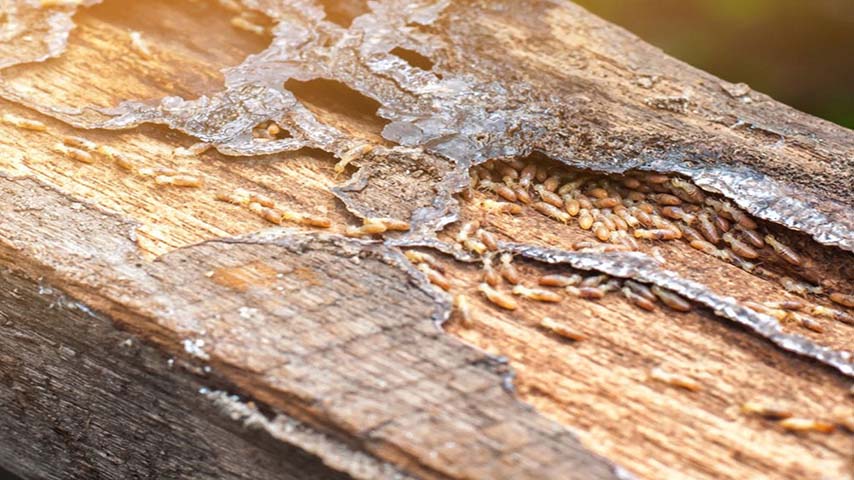Termites are silent destroyers that can wreak havoc on your property without you even knowing it. These tiny pests are capable of causing extensive damage to wooden structures, leading to costly repairs and potentially compromising the safety of your home. Understanding termite damage, how to identify it, and the steps involved in repair are crucial for maintaining the integrity of your property.
Identifying Termite Damage
Before diving into the repair process, it’s important to accurately identify termite damage. Termites primarily feed on wood, but they can also damage other materials such as insulation, plaster, and even metal siding. The signs of termite damage can vary depending on the extent of the infestation, but common indicators include:
Hollow-Sounding Wood: When termites consume wood, they leave behind a thin veneer of wood or paint. Tapping on wood that sounds hollow is often a sign that termites have been feeding on it from the inside out.
Mud Tubes: Termites build mud tubes as protective tunnels to travel between their colony and their food source. These tubes are typically found along foundation walls, beams, or in crawl spaces.
Frass (Termite Droppings): Drywood termites, in particular, leave behind small, pellet-like droppings known as frass. These can often be found near infested wood or at the base of walls.
Swollen Floors or Ceilings: Termite damage can cause floors and ceilings to buckle or appear swollen. This is a result of termites compromising the structural integrity of these surfaces.
Blisters in Wood Flooring: If your wood flooring appears to have blisters, it could be due to termites tunneling just below the surface.
Visible Termites: In some cases, you may actually see termites themselves, especially during a swarm. Swarming termites are often mistaken for flying ants but are a sign of a well-established colony.
Assessing the Extent of the Damage
Once termite damage is identified, the next step is to assess the extent of the damage. This is crucial because it will determine the scope of the repair work needed. A thorough inspection should be conducted by a professional, as they have the expertise to accurately evaluate the severity of the damage.
The inspection will typically involve:
Examining Visible Damage: This includes checking all areas where signs of termite activity are present. The inspector will look for weakened wood, compromised structural elements, and any other visible signs of damage.
Probing Wood: The inspector may use a tool to gently probe the wood in various areas to determine how much of it has been eaten away by termites. This can help identify areas that may look fine on the surface but are actually severely damaged underneath.
Using Technology: Some inspectors use specialized equipment such as moisture meters, infrared cameras, or acoustic devices to detect termite activity in areas that are not visible, such as inside walls.
Determining the Species: Knowing the type of termites involved can help in determining the extent of the damage, as some species are more destructive than others.
Repairing Termite Damage
Once the damage has been assessed, the repair process can begin. Repairing termite damage involves several steps, which may vary depending on the extent of the damage. Below is a general outline of the process:
Eliminating the Termite Infestation
Before any repair work can begin, it’s crucial to eliminate the termite infestation. There’s no point in repairing damage if the termites are still present, as they will simply continue to cause more damage. A professional pest control company should be hired to treat the infestation.
Common termite treatment options include:
Liquid Termiticides: These are applied to the soil around the foundation of the house and create a barrier that prevents termites from entering.
Bait Systems: Termite bait stations are placed around the property. The termites feed on the bait, which contains a slow-acting poison that they bring back to the colony, eventually killing the entire colony.
Fumigation: For severe infestations, the home may need to be fumigated. This involves sealing the house and filling it with a gas that kills termites.
Removing and Replacing Damaged Wood
Once the termites have been eradicated, the next step is to remove any wood that has been damaged beyond repair. This might involve:
Cutting Out Sections of Wood: In cases where only parts of the wood are damaged, those sections can be cut out and replaced with new wood.
Replacing Entire Structural Elements: In more severe cases, entire beams, joists, or other structural elements may need to be replaced. This can be a complex process that requires the expertise of a professional contractor.
Reinforcing Damaged Areas: If the damage is not too extensive, it may be possible to reinforce the affected areas with additional support. This could involve adding sister joists or installing metal brackets to strengthen weakened wood.
Repairing Surface Damage
In addition to structural repairs, surface damage may also need to be addressed. This could include:
Refinishing Wood Surfaces: After the damaged wood has been replaced, the new wood may need to be stained, painted, or otherwise finished to match the rest of the structure.
Repairing Walls: If termites have damaged drywall or plaster, these materials will need to be repaired or replaced. This could involve patching small areas or replacing entire sections of wall.
Fixing Floors and Ceilings: If floors or ceilings were damaged, they may need to be sanded, refinished, or replaced entirely.
Costs Associated with Termite Damage Repair
The cost of repairing termite damage can vary widely depending on several factors, including the extent of the damage, the materials needed for repairs, and labor costs. On average, homeowners can expect to pay anywhere from a few hundred to several thousand dollars for termite damage repair.
Some specific costs to consider include:
Termite Treatment: The cost of termite treatment can range from a few hundred dollars for bait systems or liquid treatments to several thousand dollars for fumigation.
Wood Replacement: The cost of replacing damaged wood will depend on the type of wood, the amount needed, and whether any custom work is required.
Surface Repairs: The cost of repairing or replacing drywall, flooring, and other surface materials can add to the overall cost of repairs.
Labor: Labor costs can vary depending on the complexity of the repair work and the rates charged by contractors in your area.
It’s important to get multiple quotes from contractors and pest control companies to ensure you’re getting a fair price for the work that needs to be done.
Conclusion
Termite damage repair is a critical process that requires prompt attention and expert handling. By identifying the signs of termite damage early, assessing the extent of the damage, and taking the necessary steps to repair and prevent future infestations, you can protect your home from these destructive pests. While the costs associated with termite damage repair can be significant, the long-term benefits of maintaining the safety and value of your property make it a worthwhile investment.



